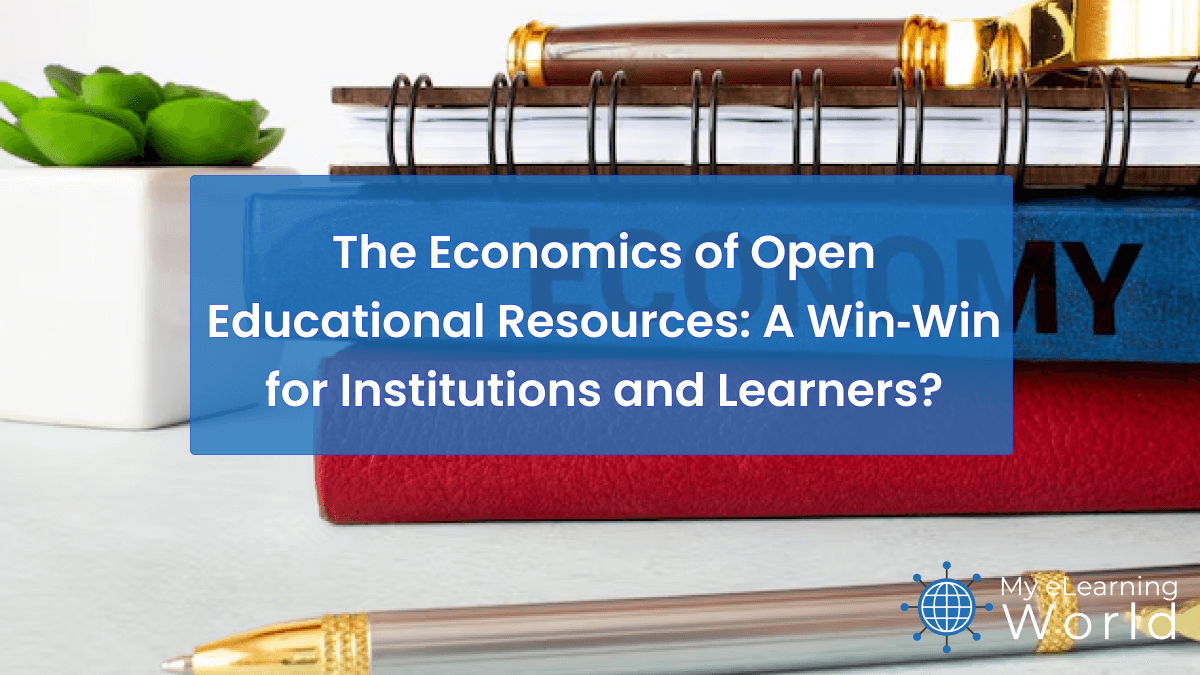In today’s fast-evolving educational landscape, the convergence of fiscal responsibility and a commitment to learning accessibility has set the stage for open educational resources (OER) to transform institutions and classrooms alike. Whether you are a parent, guardian, or educator, understanding the economic impact of OER paves the way towards more engaging, affordable, and innovative learning environments. By exploring how investment in OER not only cuts costs but also catalyzes quality teaching, stakeholders can see first‑hand why this model is increasingly becoming a win‑win proposition.
Understanding the Economics of Open Educational Resources
Open Educational Resources
Open educational resources are teaching, learning, and research materials that are free of cost and access barriers. These resources include textbooks, curricula, lecture notes, assignments, tests, and multimedia that educators continuously modify and redistribute to suit evolving classroom needs. The economic promise of OER lies not only in the elimination of costly textbooks, but also in the opportunity to implement adaptive learning modules and collaborative studies without the burden of steep licensing fees.
Cost Savings and Budget Reallocation
One key economic advantage for institutions adopting OER is significant cost savings. Traditionally, textbook expenses, licensing fees, and updating costs have strained educational budgets. By substituting proprietary materials with open alternatives, institutions can reallocate funds towards professional development, technology integration, and facility improvements. As an example, many community colleges have reported savings that have allowed them to invest in state-of-the-art learning management systems—a direct boost to student engagement and instructor efficiency.
Increased Access and Equity
The removal of paywalls and copyright barriers ensures that learners across diverse socio-economic backgrounds can access high-quality content online. This democratization of education translates into a more equitable distribution of knowledge on a global scale. When institutions reduce or eliminate costs associated with learning materials, they foster an inclusive educational environment that benefits every learner, ensuring that financial limitations do not hinder academic achievement.
The Benefits and Challenges for Institutions
Enhanced Educational Quality
OER facilitates an adaptive learning environment where educators can customize content to meet the specific needs of their student body. With the freedom to modify, repurpose, and build upon existing material, institutions are better positioned to respond to rapid changes in industry demands and technological advancements. This type of agile curriculum design enhances overall educational quality and keeps course content relevant and engaging.
Budget Optimization and Resource Management
For many institutions grappling with tightening budgets, open resources provide a welcome relief. The cost efficiency of OER extends beyond mere savings—it encourages a leaner model of educational operations where every dollar saved on content procurement can be reinvested into innovative teaching practices, updated learning technologies, or student support initiatives. This strategic budget reallocation often results in improved academic outcomes and a more competitive institutional profile.
The Integration Hurdle
Despite the clear advantages, institutions may encounter challenges when transitioning to OER. Integrating these resources into existing curricula requires careful planning and a shift in traditional teaching methodologies. Faculty training, technical support, and a change management strategy become essential to smoothly adopt new practices. However, with incremental implementation and a focus on long‑term gains, many institutions find that the initial challenges ultimately lead to sustained improvement and robust systems that benefit the entire academic community.
Impact on Learners and Educators
Empowering Learners Through Accessibility
Open educational resources grant learners the autonomy to pursue education regardless of geographic or economic constraints. This empowerment is linked directly to improved student outcomes; when students have unfettered access to a plethora of resources, they can learn at their own pace, explore new interests, and deepen their understanding of core subjects. For parents and guardians, OER also represents an opportunity to supplement their children’s education with diverse, high-quality materials that complement formal schooling.
Supporting Educators in the Classroom
Educators benefit from OER by gaining an arsenal of dynamic materials that can be tailored to suit the specific needs of their classes. Teachers no longer need to rely solely on expensive, one‑size‑fits‑all textbooks—they have the flexibility to integrate digital content, case studies, and interactive elements into their lessons. This ease of customization supports differentiated instruction; educators can ultimately design learning environments that foster creativity, critical thinking, and deep comprehension, ensuring that each student feels supported in their academic journey.
Real‑World Examples and Success Stories
Consider the case of a mid‑sized public university that transitioned to OER across its introductory courses. Faculty members observed an improvement in class participation and critical reflection as students engaged with the material in more meaningful ways. Additionally, communities involved in K‑12 education have benefited from free access to interactive science modules and historical documentaries available through OER initiatives. Real‑world examples like these underscore how OER not only enhances academic performance but also builds a culture of collaborative learning.
Case Studies: Success Stories of OER Implementation
University Breakthroughs
An influential case study involves a renowned university that phased in OER materials for its sizeable freshman cohort. The financial savings were reinvested into student mentoring programs and expanded learning centers. Faculty noted improved student retention and overall satisfaction rates, while the administrative staff reported a more manageable textbook procurement process. This turnaround was due in large part to an institutional commitment to rethinking traditional learning paradigms in the context of modern educational challenges.
Community College Innovations
Community colleges, often at the forefront of cost‑sensitive education models, have widely embraced OER to meet their diverse student needs. In one notable instance, a community college achieved a dramatic increase in course completion rates after introducing tailored OER modules. Faculty collaborated to refine lesson plans that incorporated formative assessments and multimedia content, bringing subjects to life. These innovative approaches not only demystified complex topics but also fostered an environment where students learned to think critically and independently.
K‑12 Educational Initiatives
The K‑12 sphere has also experienced transformative change by incorporating OER into everyday classroom instruction. Several school districts have piloted programs that integrate open resources with interactive whiteboards and mobile learning apps. The result has been a more engaging and efficient instructional process that aligns closely with students’ digital experiences outside of class. Parents have voiced appreciation for the transparency and affordability that OER brings to their children’s education.
Future Directions and Strategies for Maximizing OER Benefits
Innovative Partnerships and Collaborations
For OER to reach its full potential, institutions must look beyond the classroom walls and forge strategic partnerships with technology companies, government agencies, and non‑profit organizations. By collaborating on the development and dissemination of OER, stakeholders can build richer, more diverse educational ecosystems. These partnerships also promote the sharing of best practices and foster innovation that benefits educators and learners alike.
Embracing Technology Integration
As digital tools continue to evolve, the integration of technology into OER is set to revolutionize the way education is delivered. Augmented reality (AR), virtual reality (VR), and artificial intelligence (AI) are poised to bring interactivity to textbooks and lectures, creating immersive learning experiences. Institutions that proactively adopt these technologies stand to accelerate the pace of innovation, ensuring that both teachers and students stay ahead in today’s rapidly changing digital landscape.
Policy, Funding, and Sustainability
Ensuring the long‑term sustainability of OER requires a supportive policy environment and reliable funding models. Governments and educational bodies are increasingly recognizing the need to invest in OER initiatives. Through grant programs, public‑private partnerships, and legislative support, funding can be secured to maintain, update, and expand OER repositories. These models create a cycle where ongoing investment not only spurs academic excellence but also provides a blueprint for future educational reform.
Overcoming Barriers and Embracing Change
Addressing Resistance to Change
Despite its many benefits, the shift to OER is not without resistance. Some educators and administrators may be hesitant to abandon familiar proprietary materials. Overcoming this inertia involves clear communication about both the short‑ and long‑term benefits, as well as hands‑on training workshops and peer‑supported transition programs. Institutions that effectively manage this change process report higher adoption rates and a smoother transition to digitalized, open content.
Ensuring Quality and Relevancy
Quality control is an important consideration when implementing OER. While the open nature allows for rapid updates and modifications, establishing robust peer‑review systems and quality assurance protocols is essential. Institutions trade the one‑size‑fits‑all model for a more nuanced approach where educators collaborate to continually enhance and adapt content to suit the evolving academic and technological landscape. This iterative process ensures that the resources remain relevant and of high pedagogical value.
Measuring Impact and Refining Strategies
Data and analytics now play a crucial role in understanding the effectiveness of OER. Institutions that invest in learning management systems can track student progress, gather feedback, and monitor engagement metrics in real time. This empirical approach enables educators to refine content, improve delivery, and tailor instructional strategies based on actual performance outcomes. By measuring impact meticulously, institutions pivot from reactive problem solving to proactive planning—ensuring that OER continues to deliver tangible economic and academic benefits.
Conclusion: Embracing a Sustainable Future with OER
The transition to open educational resources represents a paradigm shift in both the economics and practice of education. Institutions benefit from budgetary relief, while learners enjoy broader access to quality materials that inspire academic excellence. Real‑world case studies demonstrate that, despite challenges such as integration and quality control, the overall impact of OER is overwhelmingly positive. For educators, parents, and administrators alike, embracing OER is not merely about cutting costs—it’s about reinvesting in the future of learning, fostering an environment where creativity, flexibility, and innovation reign supreme. The collaborative nature of OER sets the stage for rich educational ecosystems built on quality, accessibility, and sustained improvement.
As you consider your next steps, think strategically about how OER can be woven into your educational fabric. Evaluate potential partnerships, invest in technology integration, and actively participate in policy discussions that promote sustainability in education. With the right strategies in place, the benefits of open educational resources will continue to expand, delivering a more dynamic and equitable learning experience for all.
Action Step: Review your current curriculum and identify one area where OER can be piloted. Explore reputable sources, connect with early adopters in your network, and click here to access our comprehensive OER guide to jumpstart your transition. These practical take‑aways and actionable tips can help you lay the groundwork for a sustainable and future‑ready educational strategy.



